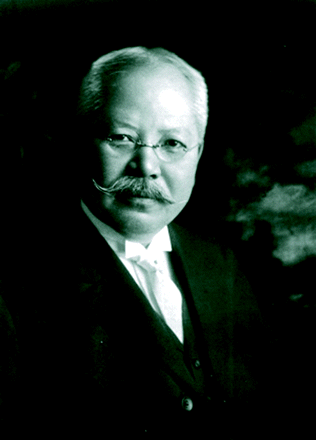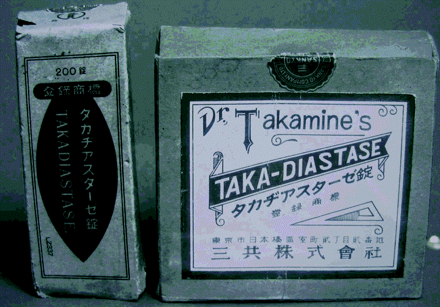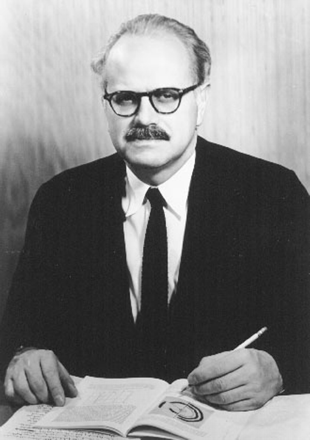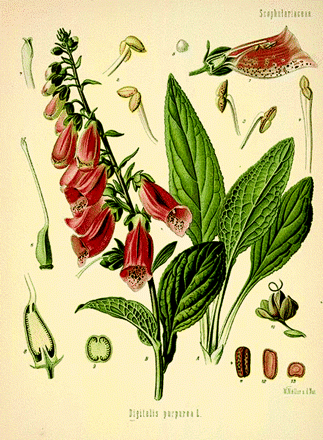CLINICAL ENZYMOLOGY: Enzymes As Medicine
The general consumer has little contact with enzymes. A person may occasionally soak contact lenses in an enzyme-containing solution to remove protein deposits; another may swallow a lactase capsule before eating dairy food, to prevent digestive discomfort; a third may take α-galactosidase drops before eating gas-forming foods such as beans. Otherwise, the average person is unaware of enzymes. Yet enzymes have a considerable history of therapeutic applications, and a growing importance in modern medicine.
The scientist knows that enzymes are remarkable, not to say miraculous, substances. They catalyze the myriad biochemical reactions on which life depends. They cause to proceed rapidly, in aqueous medium and at physiologic temperatures, reactions which our greatest organic chemists can carry out only at a slow rate, employing high temperatures and organic solvents. No wonder, then, that the more accessible enzymes have long been tried for various medicinal purposes.
These Reflections focus largely on one area of clinical enzymology—the medical uses of the pancreatic enzymes. The story of these enzymes, used both as crude mixtures and purified single entities, illustrates the changes in technology and scientific concepts that have occurred during their long history. Briefly discussed, also, is the recent leap in technology that has made possible unimagined successes in the field of medicinal enzymes.
Pancreatic Juice and Pancreatin
The exocrine secretion that passes from the pancreas into the duodenum, commonly called the pancreatic juice, is a cocktail containing proteolytic, amylolytic, and lipolytic enzymes, and contributes to the digestion of all three major food components. A crude extract, generally made from hog pancreas, and called pancreatin, has been in medicinal use since before 1870. Pancreatin can be made by extracting minced, fresh hog pancreas in a variety of ways. In one example, pancreas is extracted with 25% alcohol and the liquid is evaporated (1).
The proteases of the pancreatic juice are trypsin, chymotrypsin, and carboxypeptidase, each of which attacks proteins at different points in the polypeptide chain. These proteases have been crystallized (2), and trypsin and chymotrypsin were introduced as medicinals during the mid-20th century. Yet it was pancreatic lipase that first brought medical attention to pancreatin. When pancreatin and fat from consumed food are present in a slightly alkaline environment, the lipase begins to split the fat and the resultant fatty acids form a soap, which acts as an emulsifier. The physician Horace Dobell (1826–1917), believing that tuberculosis patients needed to ingest more fat, mixed pancreatin in milk with beef fat and administered the emulsion to patients as a nutrient (Box 1) (1). Pancreatin was also mixed with cod liver oil to emulsify the latter.
Concocting a Distasteful “Solution”
“Horace Dobell, noticing that consumptives are very likely to have a dislike for fat, conceived the idea that this was due to lack of pancreatic digestion, and [he] administered an emulsion made with the fat of beef stirred in milk with the pancreatic juice of the pig.” One might therefore assume that Dobell wanted his patients to eat fat for its caloric value because tuberculosis patients undergo wasting (i.e., consumption) of body mass. Quote taken from (1).
During the first half of the 20th century, the main applications of pancreatin were: 1) as a digestive aid in dyspepsia, and 2) to predigest food. As an example of predigestion, 300 mg of pancreatin, mixed with 1.2 g of sodium bicarbonate in an ounce of warm water, was added to a pint of milk and kept at about 43°C for 20–30 minutes. The mixture was then boiled to prevent further proteolysis, cooled, and administered by mouth (1).
By the 1940s, pancreatin enjoyed only occasional usage, as a digestive aid, generally filled into gelatin capsules by the pharmacist. A concentrated form of pancreatic amylase was available as Diastase Vera. Amylase obtained from malt—produced from the action of Aspergillus oryzae on sterilized rice hulls or on wheat bran—was also marketed, under the brand name Taka-Diastase®, recognizing Jokichi Takamine, the Japanese biochemist who had purified this enzyme (3). Diastase was mainly indicated for use by people who had overindulged in starchy food such as pasta.
Parenteral Trypsin
Early in the 1950s, The National Drug Company of Philadelphia introduced Parenzyme®, a 5 mg/mL suspension of trypsin in sesame oil, not for its digestant properties, but for reduction of local inflammation in phlebitis, ocular inflammation, and traumatic wounds. In this case, an enzyme was not being used in direct contact with its substrate but for action at a distance. Before further discussing this truly novel application, some background information on National Drug and its Research Director, Gustav J. Martin, ScD, is in order.
One of five major Philadelphia drug companies at that time, National Drug had a pharmaceutical manufacturing plant in Philadelphia and a biologics plant in the Pocono Mountains in upstate Pennsylvania. Following several mergers, National Drug no longer exists; however, its biologics facility, now part of Sanofi Pasteur, produces a large percentage of America’s supply of flu vaccine. National Drug’s research department was also located in Philadelphia but separate from its manufacturing plant. The guiding spirit of the research department was Gustav J. Martin.
Martin (1910–1967) earned his doctorate at Johns Hopkins, and served as National Drug’s Director of Research from 1944 to 1960. Martin thought in terms of big scientific concepts. His studies on competitive and non-competitive enzyme inhibitors led him to propound a Theory of Biological Relativity. Of the theory’s eight main propositions, the major ones stated that there are no absolutes in biological systems to distinguish them from physical systems, that in both types of systems the only absolute is time, and that all enzymes possess only relative specificity (4). Martin once met with Albert Einstein to brief Einstein on his theory. Biological Relativity, however, did not fire the imagination of scientists and the public as Einstein’s theory had done, and it quickly faded into obscurity.
Martin had a strong practical side as well, and his research group brought forth some novel pharmaceutical products. He pioneered the use of ion-exchange resins as non-absorbable gastric antacids and antidiarrheals, as well as the use of proteolytic enzymes for systemic action.
Martin and others found, in animal studies, that injection of trypsin inhibited egg-white edema (Box 2), a sign of anti-inflammatory action. Their experimental data showed that the enzyme acts to facilitate drainage from an inflamed area by increasing permeability, causing vasodilation, and reducing the viscosity of edema fluid (5).
Egg-White Edema
When a solution of egg white is injected into the hind paw of a rat, it causes inflammation, resulting in accumulation of fluid in the paw. A test substance, injected before or simultaneously with the egg white, will reduce the amount of fluid if it has an anti-inflammatory action. The difference in mass between a treated paw and a control (egg-white alone) paw is used to assess the anti-inflammatory effect of the test substance.
As the first product in a new category, Parenzyme® quickly gained a significant market. Nevertheless, it shared the disadvantages of all oily injectables: pain at the injection site, and formation of sterile abscesses. An aqueous vehicle was desirable, but trypsin is unstable in aqueous solution. This was solved by employing as the vehicle a 5% solution of gelatin, partially denatured by autoclaving. This prevented auto-digestion of trypsin by providing a large concentration of protein (gelatin) to attach the enzyme. The product, protected by patent (6), was marketed as Parenzyme Aqueous.
The next extension of the Parenzyme® line was a buccal tablet. Martin hypothesized that trypsin produces local changes in permeability, permitting its absorption through the buccal mucosa (7). This was followed by an ointment, for local debridement, and finally an enteric, coated tablet containing 20 mg trypsin for oral administration, Orenzyme®. The enteric coating protected the trypsin from inactivation by the gastric juice and allowed it to be released in the small intestine. Martin claimed that the intestinal tract is not totally impervious to protein molecules, pointing out that Sabin polio virus is active as a vaccine when administered orally (8).
The commercial success of Parenzyme® led to marketing of various “me-too” products, such as Tryptar® (trypsin, Armour); Chymar® and Chymoral® (chymotrypsin, Armour); and Ananase® (bromelain), which is a protease from the stems of the pineapple plant.
Clinical Enzymology
The decade of the 1950s saw a flurry of laboratory and clinical research on the systemic applications of enzymes. At a symposium in November 1956, organized by the New York Academy of Sciences, presentations were made on the parenteral use of trypsin and chymotrypsin and their anti-inflammatory effect (9). Also reported were the use of beef pancreatic dornase (DNAase) aerosols to liquefy mucopurulent secretions in bronchopulmonary disease (9). Today, Pulmozyme®—human DNA-ase prepared by recombinant techniques in Chinese hamster ovary (CHO) cells—is similarly administered to improve pulmonary function in cystic fibrosis patients. There were studies on plasmin, the proteolytic-fibrinolytic enzyme of blood, and on the activation of plasminogen. Today, tissue plasminogen activator (tPA) (e.g., Activase®) made by recombinant DNA (rDNA) technology, is given as an intravenous emergency treatment in myocardial infarction, ischemic stroke, and certain pulmonary embolisms (10).
These developments led Martin to proclaim that an era of Clinical Enzymology had arrived. He stated that until recently, it was deemed impossible to give a proteolytic enzyme parenterally, or to have it exert a systemic action. Apparently reflecting opposition he had encountered, he pictured “the textbooks” turning over in their “intellectual graves.” But with scientific caution he stated “the structure of clinical enzymology is not a fairyland castle of panacea, but a solid, 2-story building of real but limited utility” (11).
Alas, Martin’s figurative two-story structure did not endure. The clinical enzymology of the 1950s, comprising trypsin and other proteases, faded into desuetude. This author, who worked at National Drug during that period, believes that timing was largely responsible. The Parenzyme® line and the “me-too” enzyme products were marketed before enactment of the Drug Amendments of 1962. Before 1962, new drug applications (NDAs) only had to prove safety (and safety testing back then did not include carcinogenicity or reproduction studies), so these products went through the NDA process quickly and easily. After 1962, proof of effectiveness was required, generally involving two controlled clinical trials. By the 1970s, when the FDA demanded effectiveness data to support continued marketing, the industry situation had changed. Champions of enzyme therapy such as Gustav Martin were gone, mergers had occurred, and the firms involved were pursuing other new products or grappling with other problems. They were thus unwilling to devote resources to the needed efficacy studies. As a result, we do not know whether trypsin and related proteases are effective medicinals.
Pancreatin Survives the Purified Enzymes
Usually, in the history of natural product medicinals, crude extracts are succeeded and replaced by their pure active components. Foxglove leaves (digitalis) have been replaced by digoxin, thyroid powder by thyroxine, etc. Remarkably, this is not the case with the pancreatic enzymes. Today, while the trypsin and chymotrypsin dosage forms are gone, pancreatin plays a more important role in medicine than ever before. It is used in pancreatic insufficiency from whatever cause, and, especially, in the management of cystic fibrosis (CF).
Cystic fibrosis, which affects about 30,000 people in the US, is the second most common childhood-onset single-gene disorder (after sickle cell disease) in this country. An autosomal recessive disorder, caused by mutations in one gene on the long arm of chromosome 7, CF is manifested in an electrolyte transport defect resulting in thick, sticky mucus. Abnormally viscous mucus affects the airways, resulting in pulmonary obstruction and chronic infections; it also obstructs the flow of pancreatic juice from the pancreas into the small intestine, resulting in malabsorption of nutrients (12).
Although no means of correcting the genetic defect has been discovered, and no CF-specific drugs have been developed, medicine has made enormous progress in early diagnosis by neonatal screening and in the treatment of CF. While in the 1960s life expectancy for newborns with CF was less than one year, at present the median survival is thirty-five years, and 40% of patients are forty years or older (12).
Management of CF on a chronic basis requires a three-pronged approach: promoting clearance of mucus from the lungs, controlling lung infection and inflammation, and assuring adequate nutrition. Clearing pulmonary secretions from the airways is done by postural drainage with chest percussion, nebulizer therapy with sterile water or normal saline, or oscillating positive expiratory pressure devices. Antibiotics are used for both acute exacerbations and chronic suppression of respiratory infections. Finally, the mainstays of digestive aid therapy are the pancreatic enzymes which help to prevent malnutrition, once a primary cause of death among CF patients (12).
The pancreatic enzymes are administered in the form of pancreatin, or more commonly now, as pancrelipase. The latter is also an extract of fresh hog pancreas, but is processed in such a way that the enzyme activity, especially that of lipase, is more completely preserved. As a result, pancrelipase has a much higher lipase content, as well as a higher protease and amylase content, than the old standby pancreatin (Table 1⇓) (13). A high fat-splitting activity is particularly desirable for CF patients. To simplify discussion, both pancreatin and pancrelipase are referred to below as pancreatin.
The marketing of these products may be described as chaotic. As mentioned above, the use of pancreatin long predates 1938, when NDAs were first required. Thus, pancreatin products today are being marketed without NDAs and on an over-the-counter (OTC) basis. FDA records in 2004 showed that twenty-three manufacturers and twenty-six private label distributors were selling a total of thirty-eight formulations (14). These include capsules and tablets, enzymes in rapid release form or as enteric coated microspheres, with labeled lipase content ranging from 1,200 to 20,000 units per dose.
Documented problems with these products include bioavailability issues, variability in lipase content and release rate, and uneven quality of enteric coatings (14). Insufficient delivery of enzymes to the intestinal tract results in malabsorption, leading to steatorrhea, azotorrhea, and malnutrition; enzyme overdose may result in intestinal stricture and other serious problems.
FDA Attempts to Assert Control
The FDA is attempting to bring the situation under control. The Agency has decided to require NDAs for these products, in order to guarantee proper quality control in terms of product purity, potency, stability, and bioavailability. The FDA also feels that proper dosage adjustment and patient monitoring require the products to be prescription only, rather than OTC. Accordingly, on April 28, 2004, the FDA announced that manufacturers of pancreatin products must submit NDAs. A four-year period was provided for NDA submittal and approval, during which time the products may remain on the market because they are medically necessary (14).
In April 2006, the FDA followed up by issuing a Guidance for Industry on the required content for a pancreatin NDA. The Guidance spells out the control tests that must be in place for the active ingredient, the excipients, and the drug product. No toxicology or new pharmacology studies are required. To prove bioavailability, the three separate enzyme activities should be measured on aspirates from the stomach and duodenum. A dose-response relationship should be demonstrated by clinical trials, to include pediatric as well as adult CF patients, and the Guidance provides detailed instructions for several types of trials, all of short duration and involving a relatively small number of patients (15).
Does issuance of this Guidance indicate that manufacturers have been unable to produce an acceptable NDA on their own? The FDA may face a peculiar problem when the grace period expires in 2008. If no firm has submitted an approvable NDA, the FDA will be unable to remove pancreatin products from the market because they are not only medically necessary, but actually life-saving.
A New Wave of Clinical Enzymology
The development of rDNA techniques in recent decades has made clinical enzymology more prominent and more important than ever before. The clinical uses of tissue plasminogen activator (tPA) and human DNAase have been mentioned above. The ability to create enzymes in cell culture has obviated the need to isolate them from huge quantities of animal tissues. As a result, it is possible to provide replacement therapy for genetic diseases caused by the inability of the patient’s body to make an essential enzyme. The following few examples illustrate what this field of technology is accomplishing.
The best known example of rDNA replacement therapy is Cerezyme® (imiglucerase), an analog of human β-glucocerebrosidase, used for long term treatment of Type I Gaucher disease (16). Recently, news of a merger between two small companies revealed that one of them is conducting Phase III clinical trials on a potential competitive enzyme product (17). Among ten biopharmaceuticals approved in 2005, there were two enzymes: Hylenex® (human recombinant hyaluronidase) and Nagluzyme® (human recombinant N-acetyl-galactosamine-4-sulfatase), an enzyme replacement therapy for mucopolysaccharadosis VI (18). Approved earlier was Aldurazyme® (laronidase), a polymorph of human alpha-L-iduronidase, used for treating mucopolysaccharadosis I (19). Myozyme®, for the rare α-glucosidase deficiency called Pompe Disease, was approved in April, 2006 (20).
Inability to digest gluten, a protein constituent of wheat and other grains, produces celiac disease. Currently the only treatment is avoidance of foods which contain gluten, such as bread and pastas. Research has now been reported that might eventually lead to an enzyme mixture capable of breaking down gluten for celiac sufferers (21).
It is impossible to know whether Gustav Martin, that early proponent of clinical enzymology, might have foreseen a time when vital enzymes could be made to order, so to speak. Were he alive today, however, he would feel vindicated. His modest two-story building is growing rapidly toward skyscraper heights.
Comparative Enzyme Activities
Footnotes
-
Note: The sections of this paper dealing with Gustav Martin and Parenzyme® are based in part on the author’s recollections of his early years in the pharmaceutical industry, as a member of Martin’s research team.
- © American Society for Pharmacology and Experimental Theraputics 2007
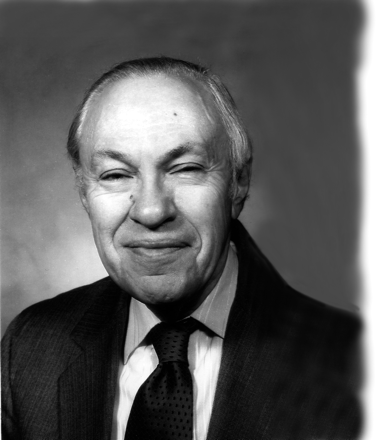
Stanley Scheindlin, DSc, RPh, holds graduate degrees in pharmaceutical chemistry and worked in drug product development and regulatory affairs. Now retired, he is a part-time consultant and writes freelance articles for pharmacy-related specialty publications.

